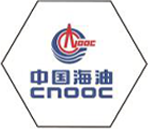
8 月 . 01, 2024 09:31
Back to list
An Overview of Pneumatic Valves Functionality, Types, and Applications in Industrial Automation
Understanding Pneumatic Valves The Heart of Pneumatic Systems
Pneumatic valves play a crucial role in the functionality of pneumatic systems, which are widely used across various industries, including manufacturing, automotive, and robotics. These valves control the flow and pressure of compressed air, enabling the actuation of pneumatic actuators, such as cylinders and motors. Understanding pneumatic valves involves exploring their types, functions, advantages, and applications.
What are Pneumatic Valves?
Pneumatic valves are devices that regulate the flow of compressed air within a pneumatic system. They are designed to manage the direction, pressure, and flow rate of air, which is essential for controlling the operation of different machinery and processes. These valves can be found in numerous configurations, with some of the most common types including solenoid valves, manual valves, directional control valves, and pressure relief valves.
Types of Pneumatic Valves
1. Solenoid Valves These valves are electrically operated and use electromagnetic coils to switch the valve on or off. They are perfect for automated systems where remote or programmable control is required.
2. Manual Valves Operated by hand, these valves offer simplicity and control. They are often used in situations where automation is not necessary and manual intervention is preferred.
3. Directional Control Valves These valves determine the path of the airflow within the system, directing it toward the necessary actuators. Commonly available in configurations such as 2/2 or 5/2 valves, they control the direction and functionality of the pneumatic devices.
4. Pressure Relief Valves As safety devices, these valves maintain pressure within a system by releasing excess air, preventing potential hazards caused by overpressure situations.
Functions of Pneumatic Valves
The primary function of pneumatic valves is to regulate the flow of compressed air based on the demands of the system. They control aspects such as
- Flow Control Pneumatic valves manage the amount and speed of compressed air supplied to actuators, enabling precise control of movement and operation. - Direction Control By redirecting airflow, directional control valves help determine which actuator operates at a given time, making it possible to manage multiple functions within a system.
- Pressure Regulation Pressure relief valves prevent over-pressurization, ensuring the safety and longevity of the pneumatic system.
pneumatic valve

Advantages of Pneumatic Valves
Pneumatic valves offer several advantages that contribute to their widespread usage
. These include- Speed Pneumatic systems can operate rapidly, making them ideal for applications that require quick movement and response times.
- Clean Operation As they utilize compressed air, pneumatic systems do not have the risks associated with hydraulic fluid leaks, making them cleaner and maintenance-friendly.
- Simplicity and Cost-Effectiveness Pneumatic systems, including their valves, are generally simpler and more cost-effective to maintain compared to hydraulic systems. They require less complex components and are easier to install.
Applications of Pneumatic Valves
Pneumatic valves are ubiquitous in various applications, including
- Manufacturing Used in assembly lines, packaging, and material handling systems to automate processes and enhance efficiency.
- Automotive Industry They control pneumatic actuators in machinery, ensuring precision in vehicle manufacturing and assembly.
- Robotics Pneumatic valves enable robotic arms and grippers to achieve fast movements and adapt to different tasks, making them crucial in modern automation.
Conclusion
In summary, pneumatic valves are indispensable components of pneumatic systems, playing a vital role in controlling airflow, pressure, and direction. With their various types and functions, these valves enable efficient and precise operation across multiple industries. Understanding their mechanisms and advantages empowers engineers and technicians to better design and optimize systems for enhanced performance and safety.
Latest news
-
Unlocking The Quality Gas Pressure ReducersNewsNov.01,2024
-
The Role of Gas Pressure Reducing StationsNewsNov.01,2024
-
The Importance and Functionality of Safety Relief ValvesNewsNov.01,2024
-
The Essential Role of Safety Valves in Natural Gas ApplicationsNewsNov.01,2024
-
The Essential Role of Gas Pressure RegulatorsNewsNov.01,2024
-
Enhance Your Premium Gas FiltersNewsNov.01,2024

